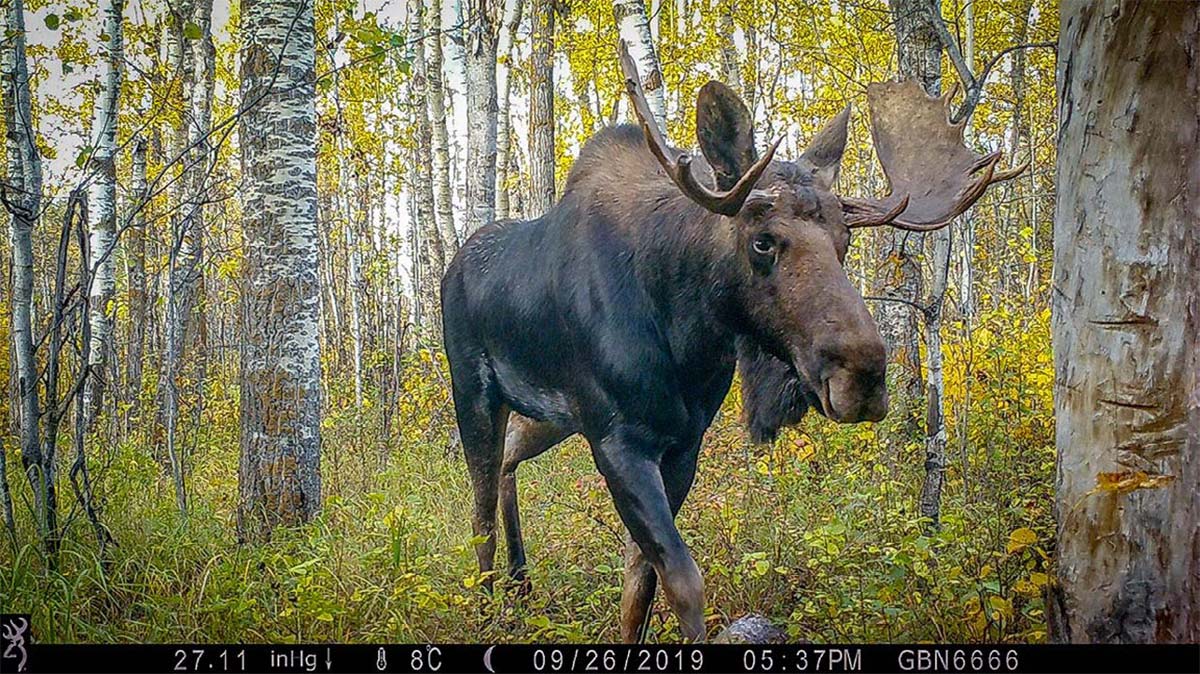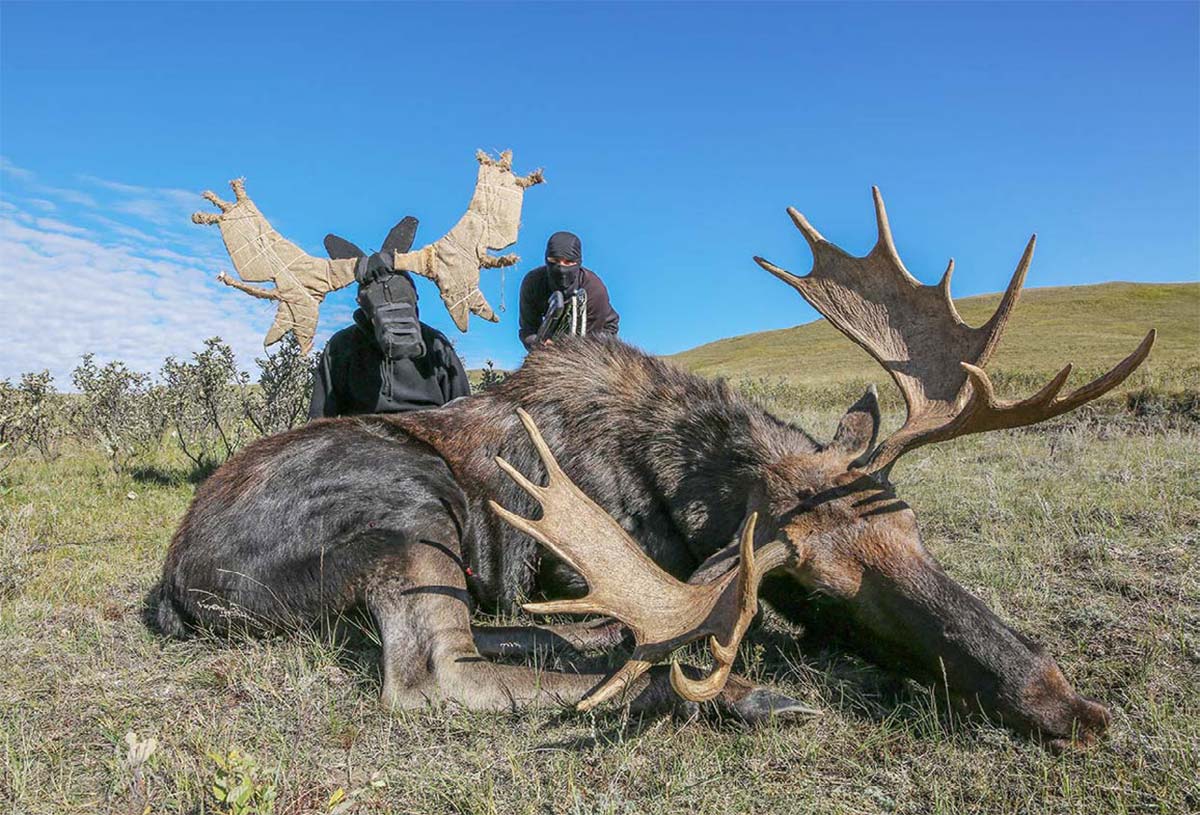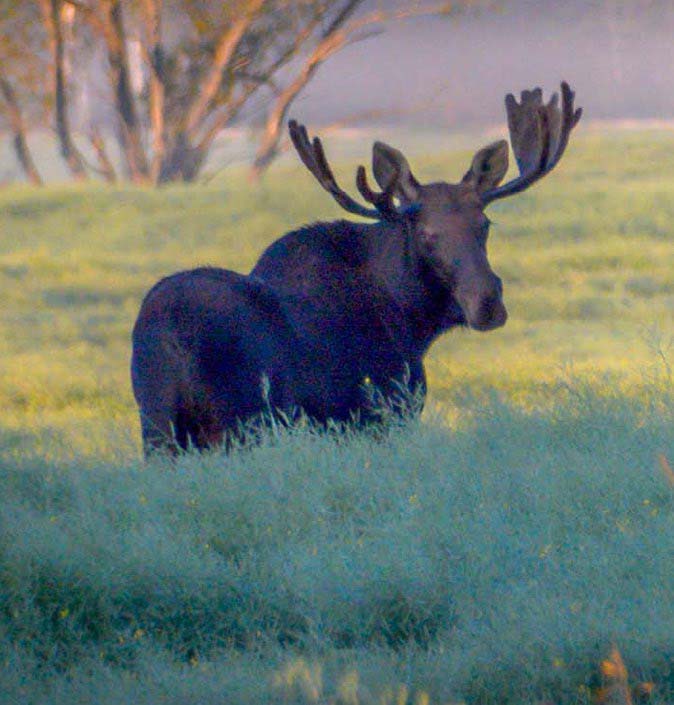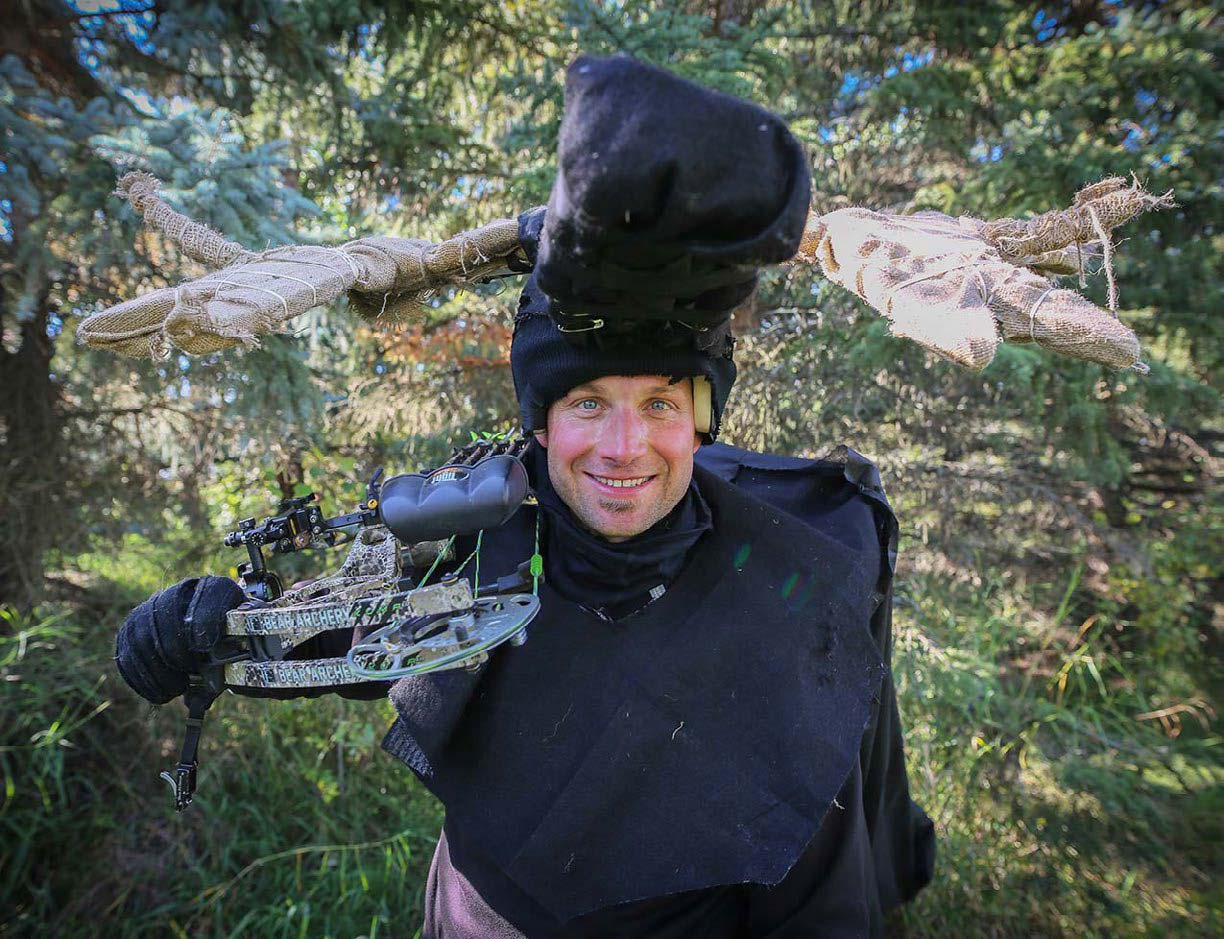I grew up in the breathtaking landscapes of northern Ontario, and so encountering a majestic moose there was an inevitability. I have many fond childhood memories, particularly of bowhunting expeditions with my father. Those cherished moments were marked by invaluable lessons. One of them was the art of calling moose. One of my foremost memories was the late September hunt when luck smiled upon me and I successfully called in my very first bull moose for my father.
Over two decades of bowhunting experience have honed my skills using a predominantly passive cow-calling approach. The thrill of being perched atop a treestand, having eye-to-eye encounters and even enjoying instances where I sensed the presence of moose without seeing them have woven a rich tapestry of experiences to remember. Despite being close by, moose often remain, silent observers, with an awareness of their majestic presence being revealed through sight alone.
This past fall though, I drew a moose tag in an area that 20 years ago did not have one moose to be found. Those of us from Alberta call them “prairie moose.” The moose followed the river valleys that weave through and around the fertile land covering much of Western North America. The moose discovered canola fields in some low-lying, flat areas of the river valleys. They also discovered an abundance of corn, wheat and more canola after leaving the valley and heading upward. Prairie moose love to hang out all summer eating those protein plants and bedding nearby in small cover.

Early scouting trips were time well spent. I was able to secure a plethora of hunting permissions on private land and crop fields along with being able to spot and photograph several bulls. It was not going to be a problem finding moose; instead, it would be a situation of finding a bull in the right spot, with the right wind, and of course, it being in the right mood.
With the region’s dense moose population and expansive terrain, the recent fall beckoned me to embrace a new challenge—hunting bull moose through a distinct approach. My research into their body language and communication intricacies paved the way for trying an unconventional strategy centered around a novel type of decoy.
The goal in this effort is to trigger an aggressive response from a real bull moose, which might come closer to investigate, challenge or fight the decoy. This approach can provide hunters with a shooting opportunity if they are positioned correctly.

In crafting this approach, I set forth three key objectives for the decoy’s design:
- It needed to be seamlessly hands-free, facilitating the act of shooting while donning it.
- I wanted it to be swiftly detachable, allowing for a change of plans if the situation turned intense.
- It had to be lightweight yet resilient, ensuring its durability in the rugged wilderness.
A quest for commercially available wearable decoys proved fruitless. That reality sent me off with an exhilarating opportunity to tread uncharted waters.
The initial attempt at decoy creation involved repurposed materials—an amalgamation of a hockey helmet, PVC pipes, an old Styrofoam winter sled, burlap and twine. Though functional, this get-up lacked the intricate details crucial for realism, such as ears, lifelike body contours and an accurate moose snout.
So, I set out to study photographs captured during my scouting ventures. When I observed moose in their natural habitat, I discovered a transformative revelation. Integrating black landscape fabric breathed life into the decoy. My work culminated in an aesthetically appealing and performance-optimized masterpiece.

Now, my uniquely designed decoy was primed for action. In the first few attempts to use the decoy in the field, it worked well, but I did feel the action in my neck, probably from the extra weight I’d been carrying atop my head. No wonder a real bull moose’s neck is so full of muscle. I can’t imagine carrying the real weight of bone-structured antlers! Regardless, I believed that the moose I spotted weren’t quite in the right mood for being as aggressive as they can get during the fall mating rut.
As the rut began in late September, my dear friend Gary joined my hunt camp and greeted my invention with a hearty chuckle emblematic of a true friend’s camaraderie. He willingly stepped into the role of the decoy bearer, a decision that brought both amusement and excitement. Clad in a full black ensemble, I ventured forth, shadows intertwining with his form.
As the day’s first light broke across the horizon, the world stirred, and so did our senses. An impressive bull moose accompanied by a cow and calf graced our path. Opting for subtlety, we allowed them to roam undisturbed, orchestrating a strategic downwind maneuver. Our ascent along a bush line bordering the moose’s domain ended in the moment of truth—the deployment of the innovative decoy.
Gary took the lead, donning the decoy. His measured movements mimicked moose behavior. An occasional bull grunt emanating from my concealed all-black attire punctuated the stillness. A calculated reveal placed us just 200 yards away from our quarry. At the bull’s initial retreat, a series of grunts and the rhythmic rustle of trees served as our clarion call, enticing him back toward the enigmatic figure.

The crescendo arrived as our maneuvers piqued his curiosity. Each step he took towards us was a testament to the decoy’s harmonious blend of innovation and natural understanding. As he came closer, each moment crystallized the realization that our unorthodox approach was succeeding. An unspoken agreement bound me and Gary, and each step affirmed our commitment and transcended the boundaries of mere hunting companionship.
In that poignant moment, the forest seemed to hold its breath as destinies converged. The culmination of meticulous planning and unwavering resolve intersected and were bound in the resolute pull of a bowstring. A whispered promise was fulfilled as the arrow found its mark. The situation had etched an indelible memory recognizing an epitome of skill, passion and a profound connection with the wild.
In this journey, I dared to be different and rewrote the script of average moose hunting. The end result of that effort was a memory that forever echoes with a testament to the potent fusion of tradition and innovation.
Per our affiliate disclosure, we may earn revenue from the products available on this page. To learn more about how we test gear, click here.





